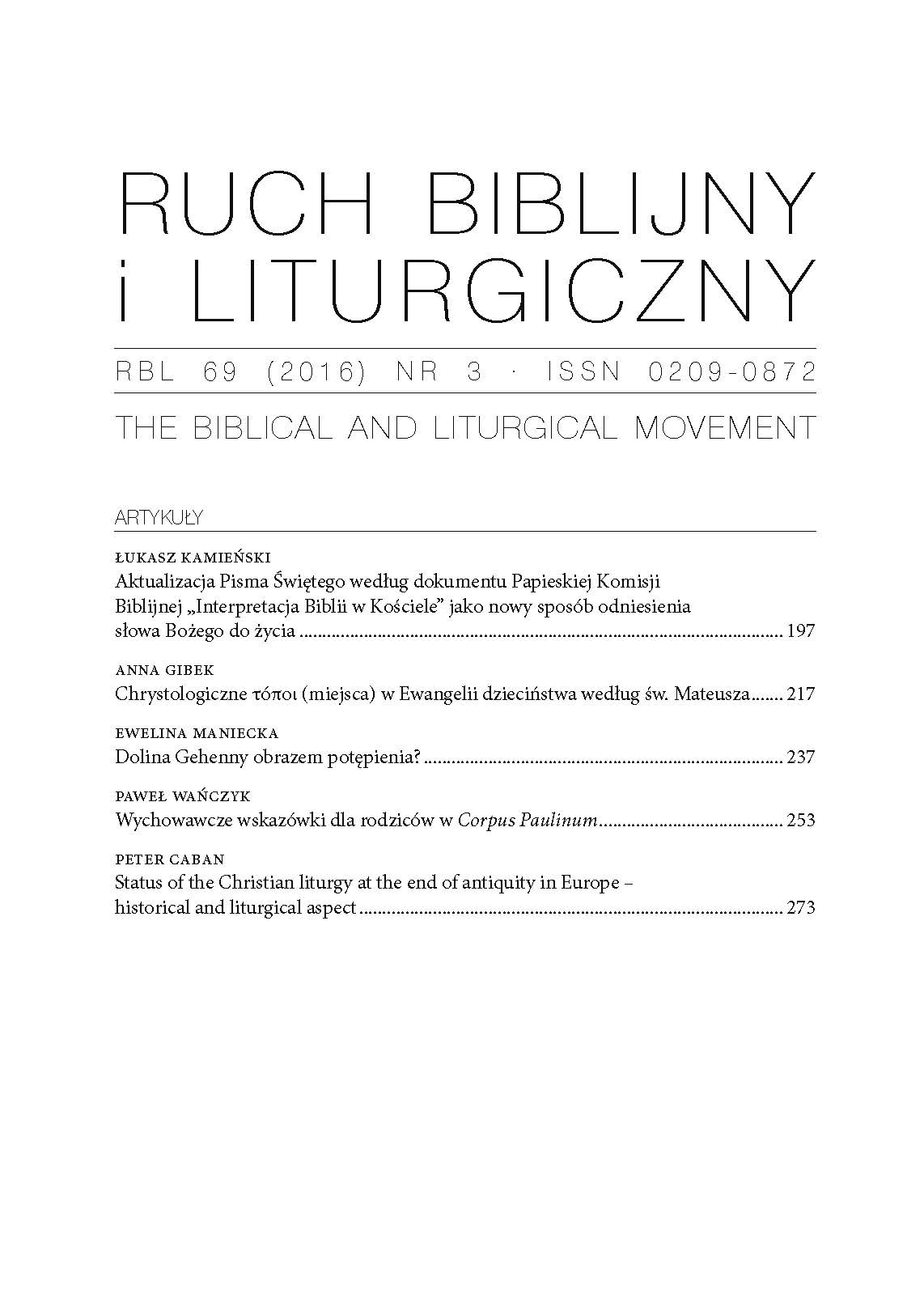Stola – orarium – stuła (pierwsze tysiąclecie Kościoła)
Stola – orarium – stole (First Millenary of the Church)
Author(s): Jarosław A. Superson SACSubject(s): History of Church(es), History of Religion
Published by: Polskie Towarzystwo Teologiczne
Keywords: Insignia; vestment; stola; orarium; stole; symbolism;
Summary/Abstract: In the ancient culture of Greece, and then of Rome, when describing garments the colloquial term stola was used. But amongst many clothes of that time (stolae) a beautiful robe stood apart – stola, which was usually worn by wealthy matrons and as a result of transformations by men who were on the high-rank of the social hierarchy. Also Vulgate, introducing refined clothes, while at the same time the insignia of the dignity of a given person, used the term stola. In the first millennium of the Church stole, which was a garment that belonged to people with major orders, was defined as orarium or stola. What does the imperial insignia or robes orarium (stola) originate from? In the article, as an answer to the question, there are presented three hypotheses of Fr. Anthony Nowowiejski, four by Joseph Braun and other opinions of the researchers of the issue. Church in the East and West used these insignia. Only Rome, in the described epoch, did not use orarium (stola), although it was known. From the teaching of synods we learn about an obligation of wearing the orarium (stola), the way of wearing it by deacons and priests, the number of used orarium, and ornamentation and colouring. From the very beginning, insignia have its own symbolism given by Isidore of Pelusium, Pseudo-Germana from Paris, Amalary of Metz, and Raban Maur.
Journal: Ruch Biblijny i Liturgiczny
- Issue Year: 63/2010
- Issue No: 2
- Page Range: 165-178
- Page Count: 14
- Language: Polish

